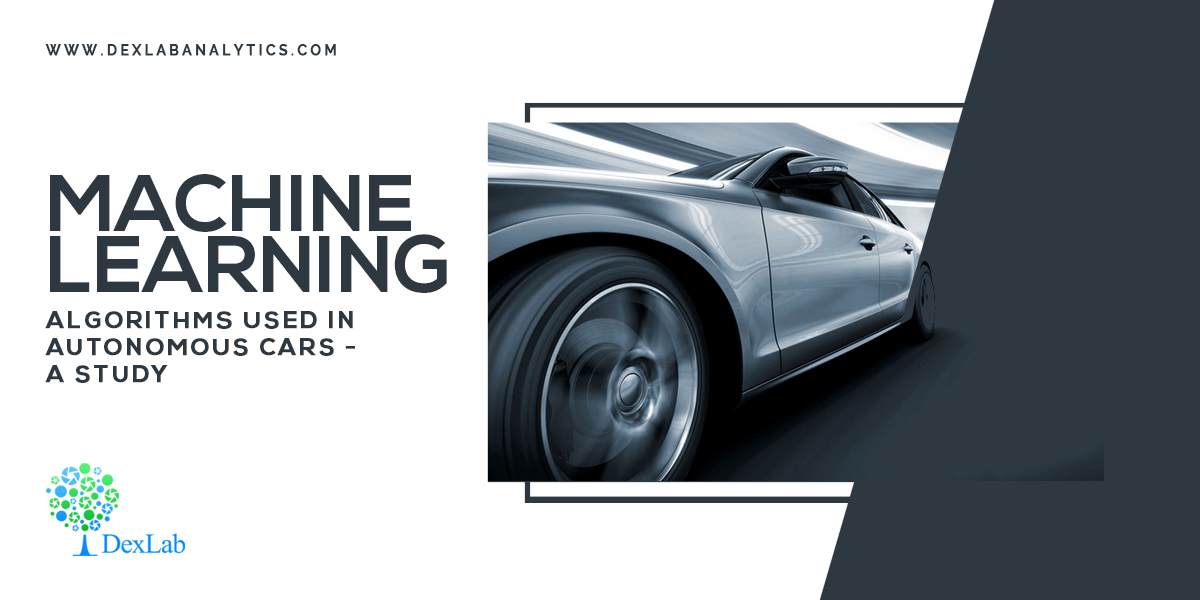Machine Learning algorithms have revolutionized sectors like automation in ways one could have hardly imagined a few years ago. For instance, take the self-driving car. According to a report, with“the integration of sensor data processing in a centralized electronic control unit (ECU) in a car, it is imperative to increase the use of machine learning to perform new tasks. Potential applications include driving scenario classification or driver condition evaluation via data fusion from different internal and external sensors – such as cameras, radars, LIDAR or the Internet of Things.”
An expert explains how machine learning algorithms are used in autonomous cars. Supervised and unsupervised algorithms are used to perceive information through the car’s infotainment system. For instance, the system can relay information about the driver’s health status and direct the vehicle to a nearby hospital if something is found to be wrong. “This machine learning-based application can also incorporate the driver’s gesture and speech recognition, and language translation.”
The algorithms can be classified into two major categories on the basis of their learning ability- supervised algorithm and an unsupervised algorithm.
Supervised algorithms “learn using a training dataset, and keep on learning until they reach the desired level of confidence (minimization of probability error).” They can be sub-classified into classification, regression and dimension reduction or anomaly detection.
Unsupervised algorithms “try to make sense of the available data. That means an algorithm develops a relationship within the available data set to identify patterns, or divides the data set into subgroups based on the level of similarity between them.” Unsupervised algorithms can be largely sub-classified into clustering and association rule learning.
The third set of machine learning algorithms falls somewhere between supervised and unsupervised learning. Reinforcement learning has sparse and time-delayed labels – the future rewards. “Based only on those rewards, the agent has to learn to behave in the environment.”
One of the main tasks of any machine learning algorithm in the self-driving car is continuous rendering of the surrounding environment and the prediction of possible changes to those surroundings. These tasks are mainly divided into four sub-tasks:
- Object detection
- Object Identification or recognition
- Object classification
- Object localization and prediction of movement
Machine learning algorithms can be loosely divided into four categories: regression algorithms, pattern recognition, cluster algorithms and decision matrix algorithms. One category of machine learning algorithms can be used to execute two or more different subtasks. For example, regression algorithms can be used for object detection as well as for object localization or prediction of movement.
Regression Algorithms
This type of algorithm is used to predict events. “Regression analysis estimates the relationship between two or more variables, compare the effects of variables measured on different scales and are mostly driven by three metrics, namely:
- The number of independent variables
- The type of dependent variables
- The shape of the regression line.”
Pattern Recognition Algorithms (Classification)
“In ADAS, the images obtained through sensors possess all types of environmental data; filtering of the images is required to recognize instances of an object category by ruling out the irrelevant data points. Pattern recognition algorithms are good at ruling out these unusual data points. Recognition of patterns in a data set is an important step before classifying the objects. These types of algorithms can also be defined as data reduction algorithms.”
Clustering
Sometimes the images gathered by the system are unclear and it is difficult to detect and locate objects in them. It is also possible that the classification algorithms may miss the object and fail to classify and report it to the system because the images are low-resolution, with very few data points or discontinuous data. “This type of algorithm is good at discovering structure from data points. Like regression, it describes the class of problem and the class of methods.” The most commonly used type of algorithm is K-means, Multi-class Neural Network.”
Decision Matrix Algorithms
“This type of algorithm is good at systematically identifying, analyzing, and rating the performance of relationships between sets of values and information. These algorithms are mainly used for decision-making. Whether a car needs to take a left turn or it needs to brake depends on the level of confidence the algorithms have on the classification, recognition and prediction of the next movement of objects.”
Check out the course structure at DexLab Analytics, a premiere artificial intelligence institute and machine learning institute in Delhi for more on the subject.
.

Comments are closed here.